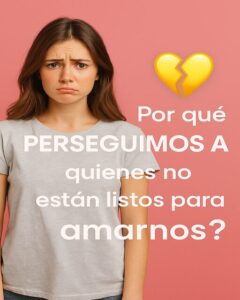If you’re a new mom or mom-to-be, you might know how important pacifier is for your baby. It is true that mothers are always concerned for their child’s wellbeing. They always wonder how to protect their baby from hazardous bacteria.
Even if you wash the pacifier after each use, there is a chance that you are not eradicating enough fatal bacteria and germs After each use, the pacifier should be sterilized in order to decrease the number of germs on it.
To protect your baby from harmful germs, always sterilize your baby’s bibs and pacifiers. Perhaps you’ve observed others using the dishwasher or boiling the water to wash Bibs Pacifiers. In this article, I will be explaining “how to sterilize BIBS pacifiers” and what you should not be doing with BIBS pacifiers.
Let’s get started :
Why Choose BIBS Pacifiers?
Pacifiers are nipple-shaped mouthpieces made of rubber or silicone that are inserted into a child’s mouth to prevent crying and suckling. For infants who are weaning, pacifiers (BIBS pacifiers) are often used.The purpose of the pacifier is to draw attention away from the discomfort of teething.
BIBS is a Danish Pacifier brand with over four decades of experience in the industry. Bibs pacifiers are a popular choice among mothers. Their pacifiers are safe, simple to use, simple to clean, and free of toxic substances such as phthalates, BPA and BPS.
BIBS pacifiers come in a variety of shapes, sizes, and patterns. This company also offers Pacifiers and Teething products.
When To Introduce a Newborn Pacifier:
Babies, by birth are fond of sucking and can use pacifiers immediately. A child specialist in the U.S. has given his views about giving the pacifiers to babies.
“Pacifiers help premature babies develop sucking and swallowing reflexes.”
“If you’re breastfeeding, wait two to four weeks before giving your baby a pacifier. But, if you’re bottle-feeding, you can give your baby a pacifier.”
Even while sleeping, pacifiers are safe to use. Remember, don’t give a hungry baby a binky.
“Pacifiers shouldn’t be used to substitute or delay meals.”
How to Sterilize Bibs Pacifiers?
Now let us clean pacifiers collectively! The pacifiers are quite filthy and greasy after your infants use them. Many women think how they can sterilize their babies’ pacifiers.
Main cause of sterilizing is to remove the milk and spit from the pacifiers. Listed below are the steps:
Step#1: Use a clean bowl for sterilizing the pacifiers
Simply place the pacifiers in a fresh basin to begin sterilizing them.
Step #2: Place Pacifiers in boiling water
In a dish of boiling water, place the pacifiers. The bowl’s bottom will eventually hold the pacifiers. Stir the water with a spoon to ensure that all of the pacifiers are submerged completely.
Step#3: Wait for the pacifiers to be sterilized
Once the pacifiers have been in boiling water for ten minutes, remove them and allow them to cool.
Step#4: Cool down the Pacifiers
After taking the Pacifier out of the boiling water, cool it down by submerging it for two minutes in a dish of ice water. You’re done after you’ve drained the bowl of water.
Step#5: Dry the pacifiers
Dry baby wipes or a new towel can be used to completely dry the pacifiers before storing them.
TIP: If your baby is older than three months, you often need the pacifiers for your baby. You can speed up the process of sterilizing pacifiers by simply pouring boiling water over the pacifiers. This method prevents water from accumulating in the nipple. If your baby is younger than three months, you should continue to use the traditional method.
Do I have to clean the pacifier every time I use it?
Pacifiers don’t have to be sterilized after every use unless they touch the ground or something else that could spread germs. It’s a bit much to clean every time you use it.
If you can’t see any dirt or other things that shouldn’t be there, it’s good to use again. But if the pacifier falls on the floor, it needs to be cleaned before it can be used again for the baby. In general, you should clean a pacifier every 15 days.
It’s important to keep your baby’s pacifier clean so they don’t get sick. Pacifiers for babies may contain germs and viruses that can make them ill. You should also change the baby’s pacifier often because germs can grow on it over time.
Are Bibs Pacifier Microwaves Safe?
No, they are not safe to put in the microwave. Microwaving or boiling bibs and pacifiers made of latex or natural rubber is not recommended because temperatures above 100 degrees Fahrenheit have the potential to damage the pacifier material.
The Natural Rubber material is likely to be harmed when exposed to temperatures that are too high. Therefore, when it comes to cleaning and sterilizing the pacifier, it is best to adhere to the official guidelines provided by Bibs.
Are pacifiers bad for babies?
While pacifiers have numerous advantages, they also have disadvantages. And since many babies fall in love with these pacifiers immediately, it’s important to think about what could go wrong before you start introducing them.
Nipple confusion:
Giving a baby a pacifier too early can make it harder for them to learn how to hold on to the breast to feed.
In order to prevent nipple confusion, I believe it’s preferable to avoid pacifiers for the first two to four weeks after a baby is born. Using a pacifier is acceptable if the infant has become used to nursing.
Pacifier reliance:
If your child is used to going to sleep with a pacifier, they will soon need it to go back to sleep if they wake up in the middle of the night.
Parents sometimes have to get up several times a night to look for a dropped pacifier.
Consider placing many pacifiers in the crate at night so that you (and ultimately your baby) may quickly get the pacifier.
Ear problems:
Studies have found that babies who use pacifiers between the ages of 6 and 12 months are more likely to get fluid in their ears. The baby may develop an ear infection as a result of it. There’s not much of a danger, but it does happen.
Consult your doctor if your baby keeps having ear infections.
You may need to tender the nappy farewell.
Caution:
Parents who followed the National Board of Health’s advice to sterilize the pacifier for 5 minutes before the first use and every day after that ask BIBS a lot of questions. Because of this, pacifiers get broken.
DON’T BOIL BIBS PACIFIERS. They are not meant to be boiled, so the high heat will destroy them. Instead, follow the steps above, which will kill the bacteria without harming the pacifier’s durability.
FAQs on How to Sterilize Bibs Pacifier
Can mold grow on BIBS pacifiers?
If not maintained clean, bibs pacifiers can get moldy. Mold is a fungus that thrives in wet and warm environments. It can develop on textiles and is not dangerous if it is not apparent.
So the best method to guarantee that your baby’s BIBS pacifiers are clean is to sterilise them.
Can I UV sterilize the BIBS pacifier?
The answer is that bibs and pacifiers should not be sterilized using UV light. Latex or natural rubber bibs and pacifiers are very delicate materials to work with. The UV sterilisation process has the potential to harm the latex substance.
Can you boil BIBS dummies?
You should never boil Bibs. But you can wash and clean it by putting it in boiling water. If you boil the Bibs dummies, the rubber that makes up the pacifier might get damaged.
Conclusion:
Let’s wrap up this post about how to Sterilize Bibs Pacifiers!
Pacifiers can be infected with germs that can cause infection in infants. It is essential to be familiar with the proper procedures for sterilising pacifiers in order to ensure that they may be used without risk. In order to avoid the spread of bacteria, pacifiers and bibs need to be sanitised after each time they are used. I assume it was a helpful post for you!




